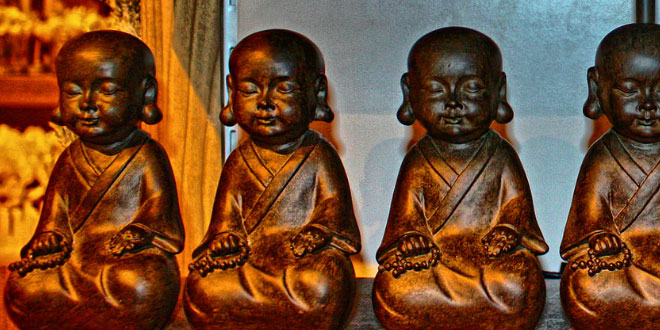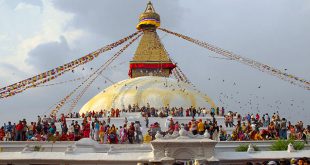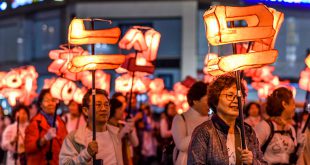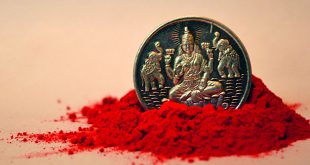On Buddha Jayanti, the Buddhist monasteries all over the world echo with prayers, sermons and recitations of Buddhist scriptures. In monasteries, religious halls and homes, Buddhist monks and followers do readings of the holy scriptures through out the day before the Buddha’s statue. Some of the people just listen to these holy prayers and sermons and give alms to the monks.
On the next day, it is a Buddha Jayanti custom to display a gigantic figure of Lord Buddha to all the followers. Hundreds of small shrines are visited and worshiped. People form large groups and parade through the streets, chanting prayers in the praise of the Lord for that He has given us. The Buddhist households put red, white, yellow and blue flags flying on their roof tops.
As a Buddha Purnima tradition, the followers and monks offer flowers, candles and fruits to the statue of Lord Buddha. They also light incense in front of the statue. The Mahabodhi tree, where Buddha attained enlightenment is visited by people from all over the world. They offer many things to the tree also. They also put coloured flags to the tree.
Buddhist Tradition
In Buddhism, the rituals involves elaborate prayers and hours of meditation. Puja or prayer offering is a means of devotion and offering to God which leads to higher spiritual level (i.e. enlightenment. The prayers begin with invoking a sangha. This is followed by the three prostrations performed by the sadhaka or dharma student. The three prostrations are the three gates or three aggregates –
- The body
- The speech
- The mind.
They also signify the identification of the student with the three bodies of the Buddha: Dharmakaya, the Smbhogakaya and the Nirmanakaya.
These prostrations are also known as the five point prostrations. Five parts of the body that touch the ground are the two palms, the two knees and the forehead. These five points suggest the five elements of earth, water, fire air and space, the five wisdom emanating from the five Buddha families and the five Buddha energies.
Through these act of prostration one has to surrender oneself to Buddhas of the three times (past, present, and future) and ten directions.
The folded hands possesses deeper meaning. The ten fingers touching each other signify the ten directions. The right hand stands for the male, active, yang energy while the left hand stands for the female, receptive, yin energy. Together they give rise to the Buddha’s enlightening activity of Upayakaushalya in which both wisdom and bliss are harmoniously blended for the benefit and ultimate enlightenment of all other sentient beings.
These offerings to the deities and the three Jewels can be followed by the Bodhisattva vows, the 100-syllable Vajrasattva mantra, mandala offerings, and the seven-line prayer of Guru Rinpoche and mon-lam prayers. Subsequent to this the devotee or supplicant can practice meditation on shunyata or emptiness. The prayers are concluded by rejoicing in the good deed and merit of others, requesting the Buddhas to teach and not enter in parinirvana. Dedications of the merit accumulated by us as a result of these prayers are then dedicated to all sentient beings.
 Kids Portal For Parents India Kids Network
Kids Portal For Parents India Kids Network







